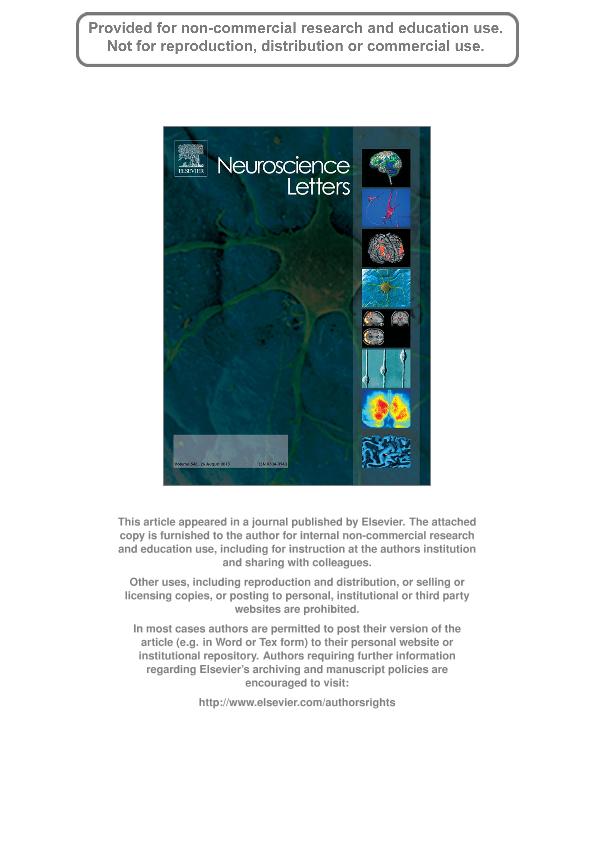Artículo
Intraperitoneal melatonin is not neuroprotective in the G93ASOD1 transgenic mouse model of familial ALS and may exacerbate neurodegeneration
Dardiotis, Efthimios ; Panayiotou, Elena ; Feldman, Mariana Laura ; Hadjisavvas, Andreas ; Malas, Stavros ; Vonta, Ilia; Hadjigeorgiou, Georgios ; Kyriakou, Kyriakos ; Kyriakides, Theodoros
; Hadjisavvas, Andreas ; Malas, Stavros ; Vonta, Ilia; Hadjigeorgiou, Georgios ; Kyriakou, Kyriakos ; Kyriakides, Theodoros
 ; Hadjisavvas, Andreas ; Malas, Stavros ; Vonta, Ilia; Hadjigeorgiou, Georgios ; Kyriakou, Kyriakos ; Kyriakides, Theodoros
; Hadjisavvas, Andreas ; Malas, Stavros ; Vonta, Ilia; Hadjigeorgiou, Georgios ; Kyriakou, Kyriakos ; Kyriakides, Theodoros
Fecha de publicación:
08/2013
Editorial:
Elsevier Ireland
Revista:
Neuroscience Letters
ISSN:
0304-3940
Idioma:
Inglés
Tipo de recurso:
Artículo publicado
Clasificación temática:
Resumen
In amyotrophic lateral sclerosis (ALS) reactive oxygen species and apoptosis are implicated in disease pathogenesis. Melatonin with its anti-oxidant and anti-apoptotic properties is expected to ameliorate disease phenotype. The aim of this study was to assess possible neuroprotection of melatonin in the G93A-copper/zinc superoxide dismutase (G93ASOD1) transgenic mouse model of ALS. Four groups of mice, 14 animals each, were injected intraperitoneally with 0 mg/kg, 0.5 mg/kg, 2.5 mg/kg and 50 mg/kg of melatonin from age 40 days. The primary end points were; disease onset, disease duration, survival and rotarod performance. No statistically significant difference in disease onset between the four groups was found. Survival was significantly reduced with the 0.5 mg/kg and 50 mg/kg doses and tended to be reduced with the 2.5 mg/kg dose. Histological analysis of spinal cords revealed increased motoneuron loss in melatonin treated mice. Melatonin treated animals were associated with increased oxidative stress as assessed with 4-hydroxynonenal (4-HNE), a marker of lipid peroxidation. Histochemistry and Western blot data of spinal cord from melatonin treated mice revealed upregulation of human SOD1 compared to untreated mice. In addition, real-time PCR revealed a dose dependent upregulation of human SOD1 in melatonin treated animals. Thus, intraperitoneal melatonin, at the doses used, does not ameliorate and perhaps exacerbates phenotype in the G93ASOD1 mouse ALS model. This is probably due to melatonin's effect on upregulating gene expression of human toxic SOD1. This action presumably overrides any of its direct anti-oxidant and anti-apoptotic properties.
Archivos asociados
Licencia
Identificadores
Colecciones
Articulos(IIB)
Articulos de INSTITUTO DE INVESTIGACIONES BIOLOGICAS
Articulos de INSTITUTO DE INVESTIGACIONES BIOLOGICAS
Citación
Dardiotis, Efthimios ; Panayiotou, Elena ; Feldman, Mariana Laura; Hadjisavvas, Andreas ; Malas, Stavros ; et al.; Intraperitoneal melatonin is not neuroprotective in the G93ASOD1 transgenic mouse model of familial ALS and may exacerbate neurodegeneration; Elsevier Ireland; Neuroscience Letters; 548; 8-2013; 170-175
Compartir
Altmétricas



